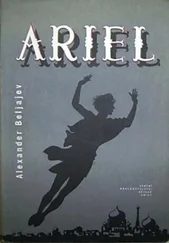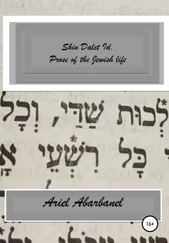Ariel Toaff - Blood Passover
Здесь есть возможность читать онлайн «Ariel Toaff - Blood Passover» весь текст электронной книги совершенно бесплатно (целиком полную версию без сокращений). В некоторых случаях можно слушать аудио, скачать через торрент в формате fb2 и присутствует краткое содержание. Жанр: Религиоведение, на английском языке. Описание произведения, (предисловие) а так же отзывы посетителей доступны на портале библиотеки ЛибКат.
- Название:Blood Passover
- Автор:
- Жанр:
- Год:неизвестен
- ISBN:нет данных
- Рейтинг книги:3 / 5. Голосов: 1
-
Избранное:Добавить в избранное
- Отзывы:
-
Ваша оценка:
- 60
- 1
- 2
- 3
- 4
- 5
Blood Passover: краткое содержание, описание и аннотация
Предлагаем к чтению аннотацию, описание, краткое содержание или предисловие (зависит от того, что написал сам автор книги «Blood Passover»). Если вы не нашли необходимую информацию о книге — напишите в комментариях, мы постараемся отыскать её.
Blood Passover — читать онлайн бесплатно полную книгу (весь текст) целиком
Ниже представлен текст книги, разбитый по страницам. Система сохранения места последней прочитанной страницы, позволяет с удобством читать онлайн бесплатно книгу «Blood Passover», без необходимости каждый раз заново искать на чём Вы остановились. Поставьте закладку, и сможете в любой момент перейти на страницу, на которой закончили чтение.
Интервал:
Закладка:
In effect, the so-called “Jewish formulae”, which were said to have been pronounced on that occasion, cannot be dismissed as the mere expression of a mysterious, imaginary language, intended to confer Satanic connotations upon the cruel tale of ritual murder to satisfy the wishes of the inquisitors [609] Anna Esposito maintains in this regard that the phrases "reproducing the curses of the Jews against the Christians, sometimes rendered in transliterated Hebrew, more often in a sort of pseudo-Hebrew, and then translated into Latin, and often into Italian as well" were intended to "augment, through the introduction of words in an obscure foreign language, the sensation of mystery and fear which were already, by the very nature of things, afflicting the Hebraic world". The insertion of such phrases in fact "seems to have been effected precisely to confirm, first of all, in all readers of the trial records, the impression of an obscure Satanic rite smelling of witchcraft" (cfr. Esposito and Quaglioni, Processi, cit., voI. I, pp. 70-71). For a similar opinion, see D. Quaglioni, Propaganda antiebraica e polemiche di Curia , in M. Miglio, F. Niutta, C. Ranieri and D. Quaglioni, Un pontificato ed una città. Sisto IV (1471-1484 ), Atti del Convegno, Roma, 2-7 December 1984, Città del Vaticano, 1988, p. 256. W.P. Eckert ( Motivi superstiziosi nel processo agli ebrei di Trento , in I. Rogger and M. Bellabarba, Il principe vescovo Johannes Hinderbach, 1465-1486, fra tardo Medioevo e Umanesimo , Atti del Convegno held by the Biblioteca Comunale di Trento, 2-6 October 1989, Bologna, 1992, p. 393) states that "the Jews had to be made to look ridiculous because ridicule produces a lethal effect" and that, to attain this objective, the Trent judges demanded "an exact explanation of incomprehensible Jewish terms”.
. With some effort, due to the crude transliteration by Italian notaries of long and complicated phrases spoken in Ashkenazi Hebrew with a thick German accent, the formulae can be reconstructed rather satisfactorily, revealing their markedly anti- Christian tenor.
For example, the phrase in Hebrew recorded by Samuele of Nuremberg ( lu herpo, lu colan, lu tolle Yesse cho gihein col son heno ) and translated by Samuele as: "In contempt and shame of the hanged Jesus, and thus may it happen to all our enemies", is only apparently incomprehensible, due to inevitable errors of transcription by the notary. The phrase should in fact be reconstructed as " le-cherpah, li-klimah la-talui Yeshu, cach (or coh) ihye' le-col soneenu , in the German pronunciation (and therefore herpoh instead of herpah ), precisely the same significance as attributed to it by Samuele, who had a good knowledge of Hebrew [610] "Dicebant hec verba in Hebraico, videlicet: Lu herpo, lu colan, lu tolle Yesse cho gihein col son heno ; que verba significant: "In vituperium et verecundiam [translation error for “vilipendium”] illius suspensi lesu, et ita fiat omnibus inimicis nostris", intelligendo de Cristianis" [“He said these words in Hebrew, that is, Lu herpo, lu colan, lu tolle Yesse cho gihein col son heno, which means, ‘In insults and contempt for the hanged Jesus, and may this be done to all our enemies’, meaning the Christians”] (cfr. [Bonelli], Dissertazione apologetica , p. 149; Esposito and Quaglioni, Processi, cit., voI. I, p. 247). In the breadth of anti-Christian Jewish literature, it should be noted that Yannai, for example, poet and composer of liturgical songs, who lived in Palestine in approximately the 5th century, was the author of an invective against the believers in Christ to be read during the prayers of Yom Kippur, the solemn fast of expiation. His concluding words were: "may they (the Christians) be covered with ignominy, contempt and shame ( bushah, cherpah w-klimah ). Cfr. A. Shanan, Otò ha-ish. Jesus through Jewish Eyes, Tel Aviv, 1999, pp. 47-50 (in Hebrew). On the image of Jesus in anti-Christian literature, in which He is referred to as talui ("the hanged one"), mamzer ("the bastard"), min ("the heretic"), see, among others, M. Goldstein, Jesus in the Jewish Tradition , New York, 1950; T. Walker, Jewish Views of Jesus , London, 1974; W. Jacob, Christianity through Jewish Eyes , Cincinnati (O.), 1974; T. Weiss-Rosmarin, Jewish Expressions on Jesus , New York, 1997.
.
Mosè da Würzburg "the Old Man", reported that the rite, some of those present recited a Hebrew formula which meant: "Thou shalt be martyred as Jesus, the hanged God of the Christians, was martyred:
p. 196]
and thus may it happen to all our enemies". At this point, all persons present responded in unison: " Amen ". The actual phrase, in mangled Hebrew, is as follows: " Hato nisi assarto fenidecarto cho Iesse attoloy le fuoscho folislimo cho Iesso " [611] "Et aliqui ex suprascriptis dicebant hec verba Hebraica, videlicet: Hatto nisi assarto fenidecarto cho lesse attoloy le fuoscho folislimo cho lesso, que verba significant: "Tu martiriçaris sicut fuit martirizatus et consumptus lesus Deus Cristianorum suspensus, et ita fieri possit omnibus nostris inimicis" [“And all the above mentioned persons said these Hebrew words: Hatto nisi assarto fenidecarto cho lesse attoloy le fuoscho folislimo cho lesso, which means : “You will be tortured to death and eaten as was Jesus Christ of the Christians the hanged one, and thus may it be with all our enemies”] (cfr. [Bonelli], Dissertazione apologetica , cit., p. 149; Esposito and Quaglioni , Processi , cit., voI. I, p. 354).
. In view of the fact that the Hebrew was rendered according to the Ashkenazi pronunciation, the invective should be reconstructed as follows, leaving little room for doubt:
Attà nizlvatà we-nikartà ke-Ieshu ha-talui le-boshet we-li-klimà " (35th Psalm, 26), ke-Ieshu , which, literally translated, would sound like: "You have been crucified and pierced like ‘Jesus the Hanged’, in ignominy and shame, like Jesus" [612] In Hebrew pronounced the German way, the phrase sounds like this: Atto nizfavto fenidecarto co-Iesho hattoloy ecc. "Jesus crucified and pierced", as an expression of offensive meanings, is found in numerous anti-Christian Hebraic compositions, widespread in medieval Ashkenazi Judaism (cfr. Shanan, Gtò ha-ish. Jesus through Jewish Eyes , cit., p. 61).
.
For the participants in the ritual, the Christian child seems to have lost his identity (if he ever had any in their eyes) and had actually been transformed into Jesus the "crucified and hanged". So many Jewish boys baptized by force in Christ’s name in the German territories, beginning with the Crusades; so many others slaughtered by their fathers and mothers to avoid that holy abuse of power, bathing the almemor and the steps of the Ark with the rolls of the Law in the synagogue with their innocent blood -- now, in turn, those who considered themselves the descendents of the victims of forced baptism imagined that a cruel but holy representation of the memorial of the Passion was capable of redeeming the descendants from their unforgettable trauma, with the God of redemption, severe and pious, capable of vengeance and pardon, involved and satisfied, as a privileged witness.
p. 197]
CHAPTER FOURTEEN
"DOING THE FIG": OBSCENE RITUALS AND GESTURES
Lazzaro, Angelo da Verona’s servant, recalled that, as an introduction to the contemptuous commemoration of Christ’s Passion, enacted upon the body of the infant Simon, the zealous Samuele da Nuremberg had intended to prepare and incite those present with a mocking sermon ridiculing the Christian faith. In the improvised sermon, Jesus was described as being born of adultery, while Mary, a woman of notoriously easy morals, was said to have been impregnated during her menstrual period, against all the rules of propriety and custom [613] "Samuel fecit quandam predicationem et dixit non esse verum quod lesus Christus fuisset ex vergine natus, sed quod eius mater, videlicet beata virgo Maria, fuerat meretrix et adultera et Christus ex adultera natus et quod fuerat exginta tempore quo menstrua patiebatur" [“Samuele declared that it was not true that Jesus Christ was born of a virgin, but that His mother, i.e., the Virgin Mary, was a whore and an adulteress and that Christ was born of an adulteress and that He was conceived while she was having her menstrual period”] (Archivio di Stato di Trento, Archivio Principesco Arcivescovile, sez.lat., capsa 69, n. 163).
.
Интервал:
Закладка:
Похожие книги на «Blood Passover»
Представляем Вашему вниманию похожие книги на «Blood Passover» списком для выбора. Мы отобрали схожую по названию и смыслу литературу в надежде предоставить читателям больше вариантов отыскать новые, интересные, ещё непрочитанные произведения.
Обсуждение, отзывы о книге «Blood Passover» и просто собственные мнения читателей. Оставьте ваши комментарии, напишите, что Вы думаете о произведении, его смысле или главных героях. Укажите что конкретно понравилось, а что нет, и почему Вы так считаете.












